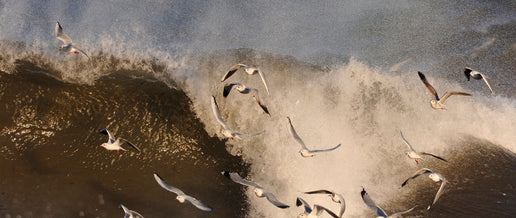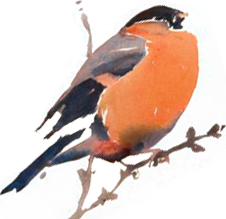There can’t be many of us who haven’t seen the effects of avian influenza (HPAI) first hand, and even fewer of us who haven’t encountered it in the media or online. We can often have very personal attachments to birds, and when we see distressing images of them dead or dying, or indeed come across them in real life, there is a very human urge to do something to help. So what, realistically, can we do?
Stay safe
First and foremost, as a rule, please don’t touch dead or dying birds, no matter how much you want to help. There are known cases of the current strain of bird flu in dogs, foxes and seals, and cases of previous strains of bird flu in humans. Valuable information can of course be gained from the reporting of ringed birds found dead or dying wild birds. Do not attempt to approach the latter to read rings unless this can be done from a safe distance, using binoculars or a telescope. For reporting a ring on a dead bird, please refer to the advice on the BTO website.
If you encounter carcasses and would like them to be disposed of, if you are on public land, this is the responsibility of your local authority. You can find out who to get in touch with here.
For cases encountered on private land, there are instructions on safe disposal here.
Report your sightings
Suspected cases of avian flu should be reported to the Department for Environment, Food & Rural Affairs (DEFRA) using this number: 03459 335577. Please be prepared to give some information on where the birds are (a grid reference or a What3Words location is very handy here). Please also note that DEFRA will only respond to your report by sending officers to test carcasses if they are not within a 10 km radius and two-week window of another positive case. The aim of this is to be able to trace how different strains of the virus are spreading, rather than to ascertain how many birds are affected by the disease. Please don’t assume that others will have reported dead birds, even if they have been there for some time.
It's also worth being aware of the numerical thresholds for a DEFRA response. Testing will be triggered by reports of:
- a single dead bird of prey,
- three dead gulls or wild waterfowl (swans, geese or ducks), or
- five or more dead wild birds of any other species
As such, dead seabirds (apart from gulls) will not trigger a response unless there are five together.
Get involved in ongoing surveys
Working out what sort of impact avian flu has had on our bird (and particularly our seabird) populations is not going to be easy. Monitoring the number of birds that succumb to the disease feels like it would be urgent, but carcasses will go unnoticed in remote places, tides will constantly remove and deposit bodies, and many will not make it ashore at all. Collecting meaningful data of this nature represents a massive and difficult challenge, and perhaps even one that is too late to perform, as seabird colonies are beginning to disperse now that breeding has finished.
A more effective means of working out the long-term impacts of avian flu will be to ensure that our breeding and wintering bird populations are monitored as well as possible. This is a real opportunity for those who might have felt frustrated by a situation in which it is easy to feel powerless to get involved and help make a difference.
For seabirds, please consider participating in the Seabird Monitoring Programme (SMP). This is now led by BTO and collects data on both numbers and productivity of breeding seabirds throughout the UK, via targeted monitoring of key sites, four national censuses, and citizen science input. This last element is likely to be boosted by BTO’s management of the scheme and is a chance for you to really contribute to the future of seabird monitoring. For species known to be susceptible to avian flu now, then changes in population size between years will give us some index of the impact of the outbreak.
For other species, we have excellent monitoring programmes, also managed by BTO. For waterbirds and common breeding species, you can help with the Wetland Bird Survey (WeBS) and Breeding Bird Survey (BBS) schemes respectively. And you can also continue to contribute ‘everyday’ birding records through BirdTrack in which the SOC itself is a core partner. An estimated 2 million bird records are submitted to the network of Local Bird Recorders in Scotland every year, with a substantial portion of them coming through BirdTrack. Those who regularly count seabirds, wildfowl, waders, raptors or roosts of gulls, Cormorants, or any other species that has been affected by avian flu will be submitting data that could compliment those collected by the survey initiatives mentioned above, and could help build a more complete picture of what is happening with our bird populations, including the impacts of this highly pathogenic disease.
You can volunteer to take part in these, and many other BTO-led surveys here.
Head over to the SOC Podcast page to hear Mark Lewis, SOC Birding and Science Officer, discussing bird flu with David Steel, Isle of May warden.
Photo: Fulmar © Mark Lewis




